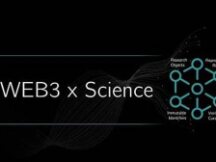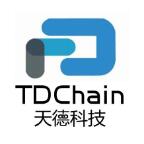Web 3.0: the New World network is here
By 2021, the meta-world has arrived, and Web 3.0 is all about foreign countries. Specifically, Web 3.0 was discussed at the US Congress hearing in December 2021. The pros and cons of developers in Web 3.0 are astounding. The impact of this hearing will be significant, as the United States Congress has a responsibility to direct and oversee the United States government, and I fear it will be heard many years later.
The major changes brought about by the Internet have been recognized by the world. Since the advent of the Internet, some people are pushing for the next generation of the Internet, and many Web 3.0 concepts are still emerging, but no consensus has been reached, and even the US Congress has failed. has not yet debated. In the past, Congress has held numerous hearings on cryptocurrencies as well, but most do not. But this time it's different, it means that Congress has done a good job promoting this version 3.0 site, knowing that it will bring huge economic benefits to the United States because the owners of eight of these models do not want to not say everything. Finally, a new technological era has arrived, different from the past.
In the future, the impact of Web 3.0 on technology, finance, economy and politics will be stronger, and the scope of these changes, including law, culture, art, security of networks, software, hardware, applications and virtual reality, be the most important implications of Web 2.0. In fact, the UK also announced a similar deal in June 2021, declaring it to be the UK's biggest financial change in 100 years and reform by technology.
However, the UK is focusing on central bank digital currency trading (CBDC), which is a compromise led by the central bank. At present, Web 3.0 includes a lot of technologies and events, so its impact will be greater than the impact of CBDCs on humans. Several updates were made in the second half of 2021. The concept of global meta has been promoted by Facebook (now renamed Meta) and has had a positive impact. . Now the concept of Web 3.0 has become more apparent, the benefits of the industry have become clearer, and the advancements in science and technology are becoming more and more evident.
This series examines Web 3.0 and presents information about the development of China's digital industry in this new historical period.
The concept of Web 3.0 is always expanding, and in this section we examine several aspects of Web 3.0, including the concept of the old and new Semantic Web, and examine the background and development of the emergence of Web 3.0, focusing on particularly in 2021. December in the United States. Congress meetings discuss some of the concepts of Web 3.0. And explain why the recent claim of Web 3.0 is really Web 3.0.
There are three sentences in this line, the following sentences describe the features of Web 3.0 and compare their differences from Web 2.0. The last sentence presents a way to improve Web 3.0.
1.3 levels of Internet development
In 1989, a team led by British computer scientist Berners-Lee of the European Institute for Particle Physics (CERN) submitted a new protocol and a paper-based system that uses the Internet protocol. web), and its purpose is to enable scientists around the world to use the Internet to exchange information.
From 1990 to 2005, the Internet age was Web 1.0, an important feature dominated by open protocol. The network is based on the HTTP protocol and the email is based on the SMTP protocol, which is the model and the building base of the platform. In the era of Web 1.0, content on the Internet was read-only and read-only, much like a non-interactive newspaper.
We are now living in the era of Web 2.0, which started around 2005. Specifically, the model is a simple evolution from "reading" to "writing" and "co-configuring", passively getting files over the Internet to create. actively files on the Internet. An innovation in the era of Web 2.0 is the ability to read and write content on the Internet. Internet users can not only get content, but also create content. However, this information is trivialized by some adults online. The user's network ID and credentials are Apple, Amazon, Google, Tencent, Alibaba, Huawei, etc. These companies collect a lot of data for daily use and make a lot of money using it.
In the future, Web 3.0 will be the Internet of Things accessible to users and developers. The new development of Web 3.0 is that it gradually weakens or even eliminates the work of middle companies, restoring costs and control to developers and users. It is a matter of property information. First, the platform is the owner of the platform contributors, not the company that owns the platform. Second, the data is open and transparent. Security is stable because the data is on a blockchain or distributed system. Your data is protected by your private key and you can use your personal key to select access and close your data when you need it. Finally, from a developer's perspective, all code is open source and there are a lot of new mixes and capabilities.
Simply put, Web 1.0 is read-only, and Web 2.0 reads and writes dynamic data through web services, web hosting, and operations management. Web 3.0 is read / written and personal / managed.
2. What does Web 3.0 mean?
The definition of Web 3.0 is constantly evolving. At first, Web 3.0 was primarily referred to as communication, but since the advent of blockchain more and more people have adopted Web 3.0 as decentralized networks. However, what a decentralized network is has not yet been decided. Although embedded systems are blockchain-based network systems, different blockchain systems have different designs, processes, and procedures, and may have different content for the web. 3.0. No shared definition of network distribution.
Note ¹: A fair decision means "decision" in most dictionaries, a concept and conception commonly used in management. Under decentralized control, power was transferred from the base to the states, but the base was still there, so it was not a “distribution”.Tim Bernes-Lee, creator of the World Wide Web, introduced the concept of Web 3.0 very early on, Web 3.0 is the "Semantic Web" and sees that the Semantic Web can use ontology to analyze the whole of the web. 'Internet. The data allows the machine to operate in various ways without human intervention. The Semantic Web is about sharing information. The Semantic Web uses metadata to convert “only” data into important data. Software developers have access to an ontology that contains verbal, social, intuitive and personalized logic from a single location. These agents search for and retrieve information from a variety of sources to provide relevant information to users [23]. This interpretation of Web 3.0 is problematic. Web 2.0 came after the Semantic Web. After everyone got Web 2.0, Semantic Web scientists marked it as Web 3.0. Bernes-Lee also believes that the “Semantic Web” could be the basis of this change, but the results are not so far away, the next generation that people are thinking of today is to be followed when it comes to security and use of technology.
In 2006, John Markoff of the New York Times referred to Web 3.0 as “intelligent web” rather than “semantic web”. Web 3.0 "provides microformats, linguistic research, information retrieval, technology education, staff approval and intelligence tools related to understanding information technology, making them cost effective and profitable for consumers. ”Web 3.0 isn't meeting its priorities, but you can have it.
After the advent of blockchain, the concept of Web 3.0 changed, and some hope to create a new online architecture to provide network services. In particular, the “Prism Gate” incident that took place in 2013 revealed a dangerous reality to the public. Citizen-wide survey. , almost not limited. Snowden's "Prism Gate" - In response to existing problems, Internet monopoly is presented by large corporations, users cannot sell their data and information, etc. by managing the data and information of all participants and enjoying the benefits of the development of the Internet. -Gavin Wood, founder and current founder of PolkaDOT (DOT), said Web 3.0 can be called the web of the post-snow age. Releasing information to the public, consent information is recorded on the consent form and personal information is kept confidential and not disclosed. Communication always takes place via an encrypted channel and only anonymous identifiers are used as a last resort. Do not carry tracking information (such as IP addresses). In short, design can be used mathematically because no organization can be trusted [6].
Note ²: In June 2013, Edward Snowden disclosed confidential information of the Department of Homeland Security to the Guardian and the Washington Post, and immediately that of the US government. Then he flew to Russia. Snowden later rediscovered the British Secret Service under the watchful eye of the "Guardian", also known as the "Prism Gate".Simply put, Web 3.0 is a structured process that provides building blocks for application makers. This blockchain replaces traditional web protocols such as HTTP, AJAX and MySQL and offers new ways to build applications. These technologies provide strong and reliable guarantees to users to ensure the security of the information they receive and provide, and to maintain the confidentiality of the information for which they pay. A Web 3.0 paradox means that integration can become utopias unless the country is devastated, and the government cannot accept them.
3. Why did the US Congress approve Web3.0 at this time?
On December 8, 2021 at 11:00 a.m. Beijing time, a conference entitled “The Future of Digital Technology and Finance: Understanding the Challenges and Benefits of Financial Transformation” will be held. financial transformation). US) took place in the US Congress. This case is important in the history of the development of the Internet and digital tokens. This is the first time that members of Congress have used conference calling to announce that Web 3.0 is the future of the Internet. Brian Brooks, former CFO of the US Financial Controller (OCC) and current CEO of BitFury, attended the hearing and did popular Web 3.0 searches for lawmakers. The difference with Web 3.0 is that it can be obtained by the user. Internet Content Owners Now you can't have the Internet (Google and other companies), but you can have Ethereum³. Web 3.0 allows users to own the Internet is not exclusive. Easy to provide, Web 3.0 can be read, written, available, and reliable.
Note³: This view is not necessarily the same because modern users can purchase the same Google stock as the owner of the Google network. And now the market value of Ethereum is so high that even if one has another coin, it cannot affect the growth of Ethereum.
Brian Brooks at the hearing
The wind at this hearing is rarely in the US's debate of the US church in the US church. Both sides in the United States show that the digital location is accelerated with digitalized with the web 3.0. Digital currency is a complaint. Therefore, the government has increased the maintenance of the digital amount without approval. Some staff refer to digital digital amounts of the amount of carbon monizations, but before importance, but more support web 3.0 I understand. The US has decided the update and get well-served by the United States than the mockery. The professional performer at the hearing, "There is no fear that is not capable of the Internet without knowing ...... because it is not Fear that we will just kill the new Americans, so do we not believe if it's Americans? "
Web 3.0 will be the next generation of the Internet, and it has been requested several times in the past but has been repeatedly refused. And why did the US Congress accept this opportunity? The possible reasons are:
1) Stable digital money can become a vehicle for Web 3.0 financial services 2) Web 3.0 integrates token exchanges, privacy, meta-universe and digital tokens, and supports Web 3.0 integration with multiple parts is possible. Point DeFi, NFT, Meta Universe: The explosive growth of the DeFi industry will change the operations of some financial companies. The Meta Universe will perform using digital tokens and many companies will join. The market price at which NFTs occur and change with no repeatable recurrence if NFTs have increased in value by $ 1 billion in recent weeks, and now It is increasing by $ 1 billion per day and could reach $ 1 billion in the next few hours. . 3) A business, not a digital token, is a green design in which many businesses and employees are involved. By 2020, 10 US banks will join. Let's analyze them one by one below.
1. The blockchain-based World Wide Web uses stable digital money as the medium of commerce
As the foundation of the Internet of Price and the Internet of Trust, blockchain technology has become mature, and as the popularity of tokens and token trading has become a reality, it is especially important for web applications. 3.0, in particular. for digital stability parts. Since the International Monetary Fund (IMF) claims that digital securities are more than 20 times the income of bank accounts, Web 3.0 wants to use the digital securities market as a means of promoting business.
But digital tokens have always been controversial, and it has become a big hit in the United States, and it turns out that it's a stable digital currency that will have a big impact in 2021. The Federal Reserve reiterates the differences between numerical results stable, more information will be made available to media by mid-2021. During this hearing, many stable banks came forward to express their point of view.
Paxos CEO Charles Cascarilla describes title security. Cascarila responded to banks' concerns about fixed coins, arguing that fixed coins are safer than bank deposits because they are backed up from FDIC insured bank accounts or treasury bills. This is indeed a new concept. A question was raised during the meeting. Why can't digital Stabilitycoins make banking work? Has it not happened yet or has it been prohibited by human control?
U.S. tech regulators have warned that there are still too many stable users of high-risk digital currency in 2020 (High Liquidity), guess I'm out of luck. There is dollar support behind this stable profit, but the risk is very high, but the payoffs are very good. , they think the probability of the problem is minimal. As a result, there is still a lot of money coming in and going out every day.
Many MPs have also assured the public in Congress that the stable coin helps the US dollar and is the guardian of the US dollar. This is a hypothesis that we have been pursuing since 2018. However, as early as 2021 the Fed did not fully agree with this hypothesis, and there was controversy within the Fed, the results were announced to the public in July. 2021. Another group claims this has helped the US dollar. By 2020, the U.S. Treasury Department is confident that digital securities will benefit the U.S. dollar and has enacted legislation allowing all U.S. banks to issue them. Personal money stabilized in January 2021. rules it introduced in January.
Obviously, the Web 3.0 companies believe that the stable digital currency supports the dollar more than it affects it, and the need for new financial needs is closer to real estate. . As a result, the use of digital stabilization funds on Web 3.0 has become a by-product, and there are more and more financial derivatives behind digital stability coins. After the baptism of Web 3.0, digitally stable earnings will be built into the US financial system, and financial markets will be fully digitalized, becoming bank funds More than CBDCs, digital currency exchange is more stable. Since the development of CBDCs is labor intensive, the current approach seems to be to test stable results first and then go through this process with sufficient and prior experience before the CBDCs are announced. In the January 2021 office, Stablecoin policy will play a vital and important role.
2. Web 3.0 integrates decentralized finance (DeFi), NFT and the meta-world.
DeFi interference
The explosive growth of Financial Insecurity (DeFi) stocks by mid-2020 has improved the quality of infrastructure / data / equipment, helping the industry to go beyond expectations and open market applications. As the cost of investing for Web 3.0 converges with the real world, as DeFi groups for real-time modeling, coverage, and exchanges mature, and reliance on the certification of physical storage evolves, the sector will have the ability of suppliers to develop a heavy market and industry. In October 2021, market analyst Statista reported that the DeFi industry started to explode in May 2020 and predicted that DeFi would increase tenfold in 2022, when digital analyst at company Diginex said that DeFi would see some predictions change. The data in Figure 2, How Financial Institutions Work, also confirms this pattern, with several loans made by DeFi.

Figure 1: The DeFi market started to explode in May 2020 (at https://www.statista.com/).

Figure 2: DeFi Assets Over $ 253.8 Billion, Financial Services Provider - Today /)
Impact of the meta edge
2021 is the first year of the Global Meta, the first implementation of Web 3.0. From Internet users to Internet companies, the application scenarios are open. Communication and discussion have become more video-centric, video conferencing and live streaming have emerged, and games have become cloud-centric. With the support of new technologies such as virtual reality, new hardware and software in different contexts, people have started to realize in recent years that the online digital giant is not the place to have fun and play, but a new way to play. The relationships of the future and the future take place on a daily basis. In this context, the concept of the metaverse gradually became more and more apparent and became a new topic of interest and discussion in the world of mass media, research and technology, investment and the economy.
Impact of TVN
NFTs will have the opportunity to become another important part of Web 3.0, most likely to create a complete ecosystem and modify it on its own. According to Google Trends data for December 24, over the Christmas weekend, the global search volume for the term "NFT" (Non-Fungible Token) topped the word "cryptocurrency." The rise of NFT research confirms that digital devices have entered the context and that OpenSea, the most popular NFT competition and sales platform, has exceeded $ 10 billion in revenue. Research firm Cointelegraph estimates heterogeneous token sales will reach $ 17.7 billion by the end of 2021. This means NFTs could affect the world as much as cryptocurrencies.
The impact of NFTs is not limited to cryptographic illustrations, to fragmentation on NFTs. Traditionally, electronic data can be continuously printed, which affects the owner of the intellectual property, and when the intellectual property is published, it can be easily copied by others. However, the NFT has changed this phenomenon. Even if they appear in electronic form, their uniqueness can still be maintained.
Three. Many green companies are gearing up for Mega Web 3.0 launches.
There are many companies involved in the game, including exchanges and consolidation represented by dydx, product security contracts represented by Centrifuge, cryptocurrency processing, play with the assets of the chain represented by Axie, and platforms. trading represented by Gitcoin. by Syndicate, the platform linked to the NFT represented by the NBA Top Shot ... From the rapid rise of BNB, then the rise of MATIC to the current rapid growth, more than 100 standard layers in race / cross-layer. #DeFi groups have appeared. With LUNA, SOL and DOT, it can be seen that the design of multi-chain and multi-stage ecosystems with DeFi technology will soon emerge, which will facilitate the creation of many new businesses as well as many companies. -for-more than Web 3.0. It's not a big Web 2.0 company, it's a new era of business. Meta also announced that it will provide integration with Web 3.0 technologies, and Web 2.0 companies have also started to transition to Web 3.0. Just as a Web 2.0 business (like Google) differs from a Web 2.0 business (like American Online), every new era has a new leader.

Web 3.0 new business
4. Why is Web3.0 really so popular these days?
At the moment, Web 3.0 is not the Semantic Web (but you can use Semantic Web technology) and it is not a network distribution, but it is also a network distribution. The new Web 3.0 is not just a technology, but many technologies that integrate 5G, the World Wide Web, digital currency, blockchain, metacosm, cloud computing, chip and edge computing at least 10,000 times more. than Web 3.0 previously defined.
In the previous version of Semantic Web Web 3.0, there was a lot of data, research projects, landing projects, but no transmission and large-scale use, and no green design. The new Web 3.0 benefits companies, companies involved, construction companies, sponsorships and national interests. Not only backed by parliamentary hearings, there are now $ 3 trillion in digital profit assets. It was by Satoshi Nakamoto 2008. It didn't exist for a year before the white paper was written. The market value of digital profits alone has exceeded the UK's GDP (the fifth largest in the world).
More importantly, the new Web 3.0 also includes the development of new technologies and applications, as well as new international standards. An important difference between the reform of Web 3.0 and Web 2.0 is the reform of financial infrastructure, the new digital industry has introduced new business models and printed business economies, and has undergone many constructions below. This includes changes in the use of technology, finance, industry, culture and the arts, and construction, and in the finance and finance sector. , bank transfers, financial reforms and the digital stability of bank deposits Coin exchanges are the main institutions of banking. . (CBDC) has not yet started. The new Web 3.0 has already started, not in the future, as digital currency is already available and many new technologies have emerged.
Applications
[1]. Jinhong Cui, “Functional Sharing Architecture and Instant Messaging or SNS Implementation”, 2008,978-1-4244-2013-1 / 08,2008 IEEE
[2]. Juan M. Silva, "Web 3.0: A vision to bridge the real-virtual divide", ACM, 2008, ACM 978-1-60558-319-8 / 08/10
[3]. Victoria Shannon, “The Most Innovative Web.” International Herald Tribune. Released: Wednesday May 24, 2006.
[4]. Dan Farber and Larry Dignan, “TechNet Summit: A New Era of Innovation”. ZDNet Blog. Posted: November 15, 2006
[5] .Web 3.0 Wikipedia Definitions.http: //en.wikipedia.org/wiki/Web_3.0 (see 8 avril 2010)
[6] .Gavin Wood, Apps : Web 3.0 Looks Like, http://gavwood.com/dappsWeb 3.0.html
[7]. Han Xiaoting, Niu Li, "Integrating Subject Information in Higher Education Institutions in the Context of Web 3.0", 2nd International Conference on Industrial Mechatronics and Automation, 978-1-4244-7656-5 / 10, 2010, IEEE
[8]. Russell K, "Semantic Web", Computer World, 2006 (9:32).
[9]. Zhang Yang, « Development of Web and Library sReference Services - From Web 1.0 to Web 3.0 », Sci-TechInformation Development & Economy, voI.l8, 2009.
[dix]. Radar Networks.http://www.radarnetworks.com/,http://www.evri.com (방문일: 08/03/11)
[11]. Signal website: http://redlightcenter.com (visit 12/3/11)
[12]. Second Life official website: http://secondlife.com (visit: 03/11/13)
[13]. IMVU official website: http://www.imvu.com. (see 03/11/13)
[14]. Active Words website: http://www.activeworlds.com. (Visited March 20, 2011)
[15]. Economic statistics: http://secondlife.com/whatis/economy_stats.php. (Visit date: 1/04/11)
[16]. Davis, M. et al. (2007). Semantic Social Computing. Http://colab.cim3.net/file/work/SICoP/2007-09-20/MDavis09202007.pdf. (Mus saib 04/11/11)
[17]. Ojos Riya http://riya.com. (Visited May 4, 2011)
[18] .Like.com. http://www.like.com/. (see 4 Sep 2011)
[19].Jacek Jankowski, Sebastian Ryzard Kruk, "2LIP: TheStep Towards The Web 3D", WWW 2008, 21-25 avril 2008, Pékin, Chine. ACM 978-1-60558-085-2/08/04
[20] .LifeWare.http://www.exceptionalinnovation.com. (Lire : 14/04/11)
[21].Microsoft WSDhttp://msdn.microsoft.com/library/default.aspx(11/03/11 방문)
[22] S. A. Inamdar thiab G. N. Shinde, “Intelligence-based search engine systems for web crawling, research, thinking and innovation in integrative ICT education”, 2009
[23]. Strickland, Jonathan. , "How Web 3.0 Works". http://computer.howstuffworks.com/web-30.htm, (visit 20 avril 2011).
[24]. Robin D. Morris, "Web 3.0: What It Means to OnlineLearning", TechTrends (Volume 55, Number 1) Springer, January / February 2011 edition
[25]. Lizin, Katie the parrot. "Web3 Renaissance: The Golden Age of Content", https://li.substack.com/p/the-web3-renaissance-a-golden-age
[26]. Mathieu d'Aquin, Enrico Motta, "Collaborative SemanticAuthoring", 1541-1672 / 08, 2008 IEEE
[27]. Peter Robinson, Stefan Hild, "Monitoring the Availability of Ubiquitous Web Services", 2003 IEEE
[28]. Rajiv, Prof. Manohar Lal, “ICT-enabled technologies for Agriculture Education and Research”, International Conference on Agricultural Education and Knowledge Management, August 24-26, 2010, Agartala (Tripura), India.
[29]. Rajiv, Professor Manohar Lal, "Web 2.0 in Agricultural Education", International Conference on Agricultural Sciences and Knowledge Management, August 24-26, 2010, Agartala, India.
[30].Parag Khanna, Balaji S. Srinivasan, « Great Protocol Politics ». https://foreignpolicy.com/2021/12/11/bitcoin-ethereum-cryptocurrency-Web 3.0-great-protocol-politics/.
[31]. Cai Weide. Smart contract: relationship agreement [M]. Legal press, 2020
[32] Cai Weide et al. Interlink Network: How the future of connection [M] Dongyang Publishing House, 2020
[33] Cai Weide, Jiang Xiaofang, Wang Kangming, « Financial Reform and Payments : The Second Phase of the New War (1) », 12 janvier 2021.
[34] Cai Weide, Jiang Xiaofang, Wang Kangming. "American Standard Coin Management Model: A New Currency War nkag mus rau theem ob (2)", 222.22.
[35] Law Weide, Zeng Wenwen, White Paper on Non-Homogeneous Rights (NFR): Using Blockchain Technology to Create Digital Rights, October 14, 2021.

Scan QR code with WeChat










